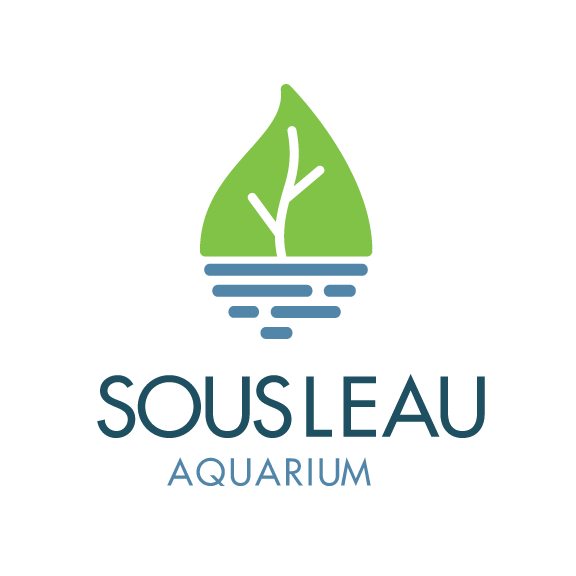Designing a new aquarium with aquatic plants is an important step. Many people jump into this critical phase too quickly and skip important steps in the process. This can result in errors that could have been avoided. the loss of aquatic animals, plants and having to "buy" again are never an easy option.
Here are important steps to consider when designing an aquarium:
1- Equipment selection (filtration, lighting, Co2 and aquarium size)2- Layout design
3- plant and hardscape selection.
4- setting up your aquarium

Equipment selection
Once you've decided on the equipment that you will be using, go ahead and set your aquarium up in an area out of direct sunlight. This will be important to avoid issues of excess algae in the future. Whether you decide to buy new or used equipment always ensure they are functioning correctly to avoid any future hassle. Use a leveler to make sure your aquarium is completely flat. This will help in avoiding any unnatural pressure being applied to the aquarium seams.
When choosing filtration a good rule of thumb is to choose a filter with a gallon per hour flow rate 5 to 10 times the capacity of your aquarium. This will ensure optimal circulation. Co2 injection is not mandatory but has proven to be an extremely vital component in growing healthy and long-lasting plants. In some instances with certain plants CO2 injection will be required. Your plant selection will determine the type of aquarium lighting you will need. However a full spectrum LED light fixture has become a staple in most aquarist households.
Layout Design
The second step is to brainstorm ideas and create your concept layout design. During this part of the process the sky is the limit. Some aquascapers create their designs based on certain principles found in nature such as the golden ratio or the rule of thirds. More information on these principles can be found here. (Insert website link) One of the most commonly used layout designs today is the traditional "Iwagumi" layout. A minimalist approach consisting of 5 stones. Each with it's own unique contribution to the aquascape making use of one or two plant species only. A nature style aquarium, popularized in the late 1980s by Takashi Amano is an attempt to break away from the traditional dutch style aquarium by making use of lush green plants , varying slopes , wood and stones to create a scenery of which one could truly find in nature. A Biotope design is a themed layout which attempts to recreate that exact natural habitat of the aquarium inhabitants. Many Biotope layouts incorporate leaf litter,sticks and tannins which would commonly be found in flooded forests or river basin habitats.
Choosing plants and hardscape materials
Once you have made a decision on which layout design best suits your budget and needs, you can decide on which aquatic plants you will incorporate into the layout design. Tropica 1-2 grow! Has carefully organized all of their plants into categories to coincide with your equipment and skill set which can be found here. Selecting the right soil and hardscape Materials. Aquasoil platinum is an excellent technical soil that we at Sous L'eau are happy to get behind. Not only is it very rich in minerals but also contains natural water buffering abilities in the range of 6.4-6.6 . This is an ideal for shrimp keepers, fish breeders and plants that require a lower level of pH. Aquasoil platinum can be purchased here. Some of the more common types of wood found are Spider-wood, Amazon wood, Malaysian drift wood and Manzanita. When deciding on which suits your needs, keep in mind most of these pieces will need to be pre soaked for up to a few weeks before losing their bouoyancy . Some of these types will also leach a dark brown color known as tanin. These tanin have a natural ability in lowering the pH level of your aquarium.
When choosing your stones it is important to keep the aquarium inhabitants in mind. Some types of stone have the ability to increase the Total Hardness TH of the water which may be detrimental to certain species health. You should always aim to use inert stones which will not raise the total hardness or alter the pH of your aquarium. Frodo stone, Manten stone , lava rock and dragon stone will not alter your water chemistry.
Setting up your aquarium
This is the most fulfilling and important step of the entire process. After carefully placing your soil and hardscape materials ensure you are happy with the overall look and feel of your new creation. It is advisable to revisit your layout design 24 hours later before planting. This will allow you the necessary time to think about any changes you wish to make. Once the planting process is complete, feel free to turn on your filtration and begin the process of cycling your aquarium. For more information on how to cycle your aquarium please visit here.
When It comes to the delicate balance of ensuring the quality of our plants and the health of our aquatic inhabitants. We depend on thrive S all in one aquarium fertilizer by NiloCg. This comprehensive all-in-one fertilizer does not contain copper which as we know today can be hazardous for some fish and shrimp. For more information and how to purchase Thrive products click here. For more articles and information on our other products please visit our blog page at https://www.sousleau.ca/blogs/aquarium-talk.
Sousleau aquarium
